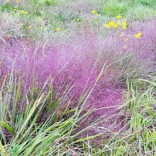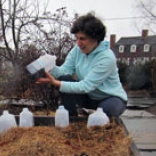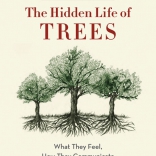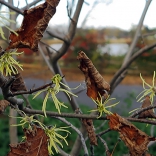Covering Ground
 Naturescapes on Main Street: Blight or Benefit?
Naturescapes on Main Street: Blight or Benefit?
Two voices speak loudly these days about landscaping, and they are in opposition. One proclaims the need for neatness along main streets. The other defends the need for midtown bird and insect habitats, which may not have the clean lines of a conventional lawn and landscape.
 Noteworthy and native: Late summer grasses
Noteworthy and native: Late summer grasses
For most people, the words “grass” and “lawn” go together like mac and cheese. Yet in the month of August, it’s easy to see that some grasses are anything but lawn-like. Low-growing purple love grass offers luminescent splashes of color along roadsides. The airy tops of switchgrass decorate wet fields and woodland edges. American beach grass reduces beach erosion.
 Why we should care about local seed production
Why we should care about local seed production
Very, very few seeds are produced commercially in the Northeast today. Until the early part of the 20th century, almost all seed was locally produced, harvested, and planted—and thus, regionally adapted to some degree. The mainstream seed industry today, however, emphasizes plants that can deliver a one-size-fits-all performance across a broad geography.
 Landscape Myths vs. Landscape Science: Get the Facts
Landscape Myths vs. Landscape Science: Get the Facts
Much land care 'education'—for homeowners and landscape pros alike—comes from trial and error. Another big source is word-of-mouth, which results in myths. And, of course, product manufacturers offer their own spins on how to get things done.
 Just in time for April showers: Rainbarrels
Just in time for April showers: Rainbarrels
I have been a fan of rain barrels for many years. (I own eight of them and wouldn't be without them.) I have also written about these handy devices on several occasions, most recently this week in the community papers for ZipO6/TheDay.
 Do this, not that, in the March landscape
Do this, not that, in the March landscape
The mild winter gives way to a spring calendar--but, gardeners, not so fast! For some ideas on what to do--and not do--in the March landscape, please read on:
 Start seeds in milk jugs--outdoors, in late winter
Start seeds in milk jugs--outdoors, in late winter
It was February 25 when I put five milk jugs outdoors for my first experiment with milk jug growing. On March 30 that year, there was plenty of germination. By the end of April, I was harvesting spinach.
 2 Good Books Take Us to the Inner Lives of Plants
2 Good Books Take Us to the Inner Lives of Plants
Do trees live in families? Do they defend one another? Do trees “feel” a loss when one of their community disappears? What if a tree “remembers” the climatic conditions of its seedling days, but experiences a changed climate as it reaches the century mark?
 Look around for clues to beautiful winter landscapes
Look around for clues to beautiful winter landscapes
People often ask about creating a landscape with four-season appeal. I tell them that our northeastern winters put our imaginations to the test--because we human beings are more attracted to beautiful colors than we are to interesting shapes and textures. These dormant months are a great time, however, to find the structure of the landscape.
 Cover ground with shrubs--why not?
Cover ground with shrubs--why not?
No lawn mower has ever touched a 2,500 square-foot section of my yard, nor will it, as long low-growing juniper shrubs continue to thrive on this hot, sunny, dry, windy embankment. These junipers are poster children for the concept of putting the right plant in a place, the perfect groundcover for the spot. (No credit to me.
